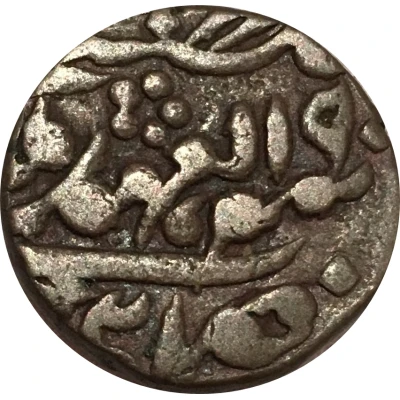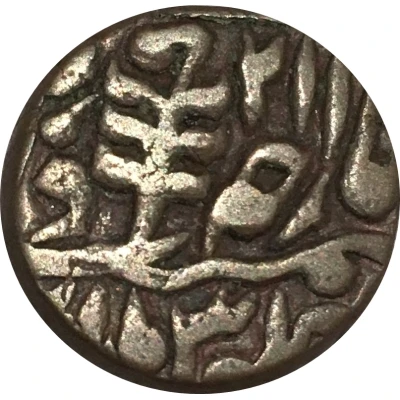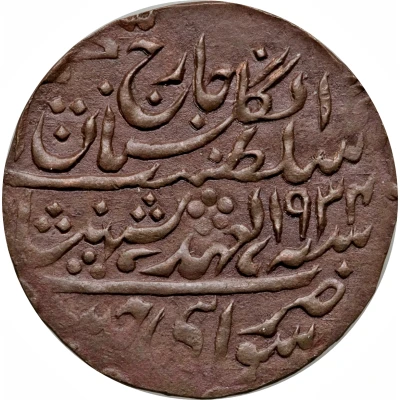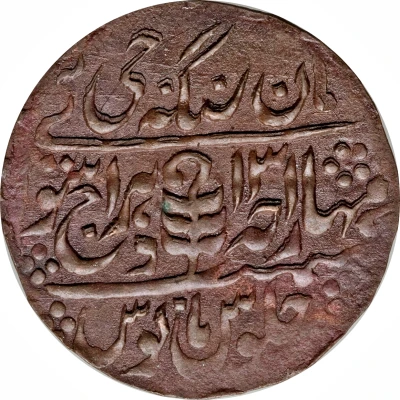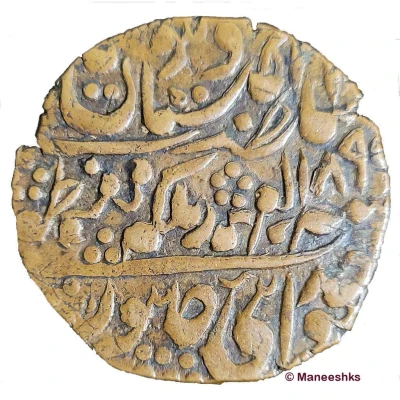
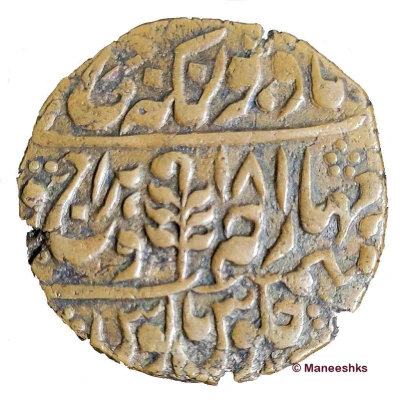

© Maneeshks (CC BY-NC)
1 Nazarana Paisa - Victoria and Madho Singh II
1898 year| Copper | 15.38 g | 32.68 mm |
| Issuer | Princely state of Jaipur |
|---|---|
| Empress | British India › Victoria (1876-1901) |
| Maharaja | Madho Singh II (1880-1922) |
| Type | Non-circulating coin |
| Year | 1898 |
| Value | 1 Paisa (1⁄64) |
| Currency | Rupee (1621-1949) |
| Composition | Copper |
| Weight | 15.38 g |
| Diameter | 32.68 mm |
| Shape | Round (irregular) |
| Demonetized | Yes |
| Updated | 2024-10-05 |
| Numista | N#303434 |
|---|---|
| Rarity index | 97% |
Reverse
Lettering: maharaj dhiraj sawai madho singhji, sana julus
Translation: Emperor Sawai Madho Singhji, Regal year
Edge
Plain
Comment
Year (date) on the obverse of the coin.
Regnal year on the reverse of the coin.
Nazarana or Nazars were presented to the king on special occasions.
The word ‘Nazarana’ is derived from the root word ‘Nazar or Nazr’, Arabic in origin that literally means ‘sight, surveillance or attention’. In the context of Indian tradition, it also means a gift, present or tribute, i.e., presenting a ‘nazar’ of money or jewelry by relatives or neighbors to a bride upon first sight is a common tradition.
Likewise, in Mughal courts, it was considered a privilege, prestige and an honor when the Emperor either granted a public or private audience, or bestowed some special favor upon a deserving recipient for bravery, loyalty etc, or to commemorate some special event e.g. birth of a child, marriage, victory in battle, religious festivals, accession, anniversary, etc.
People, who wanted to present nazars would order them from the mint and pay extra for the special struck coins. The extra fee for extra work that was involved in making Nazarana coins and quite often they were minted on larger flanges than coins for circulation. This was done so that more of the lettering would fit on the coin. When presented to the King, he would accept these and the coins would go back to the mint or treasury to repeat the cycle thus earning the mint, and by default the Emperor, a tidy profit as mint charges from production of such presentation coins.
‘Nazar’ and ‘Nisar’ were important aspects of Mughal court ritual. Often dignitaries would place a predetermined amount of sum, divided into specific components as Nazar and Nisar, in front of the emperor when they had an audience with him, either at a general court or Darbar (imperial assemblages), or at a private audience.
In Darbars there was a regulated pecking order of who and when places what amount. Of these the sum presented as Nazar was a token to bring forth more favour in return. In its most simple form the favour could even be the ‘sight’ of the Emperor – even that was enough to bring forth good fortune. But in a more ritualised context it would of course be the role, the status, the wealth, the prestige, the property of the nobles all of which technically belonged to the Emperor.
Interesting fact
The 1 Nazarana Paisa coin from the Princely state of Jaipur, featuring Victoria and Madho Singh II, has a unique feature - it has a hole in the center, which was a common design element in coins of that era, used to thread them onto a string or chain.
